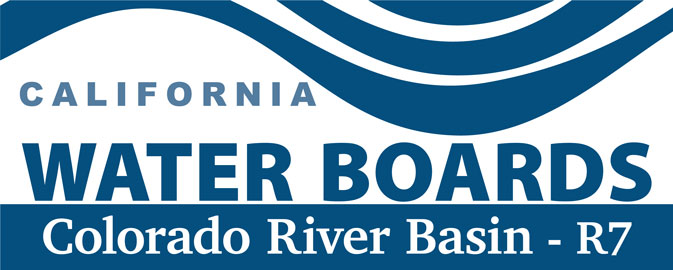Land Disposal Program
Geothermal Energy
In this Region there are three geothermal fields that have electrical power plants extracting hot geothermal brine from the subsurface and using the brine’s heat to make electrical energy. The California Division Oil and Gas has designated the geothermal fields as the Salton Sea, East Mesa, and Heber geothermal fields. There are approximately 16 geothermal electrical power plants operating in this Region.
The geothermal brine that is used by the various facilities varies by location. The brine can vary in total dissolved solids from 7000 ppm (parts per million) to over 200,000 ppm and contain some suspended solids. The suspended solids and dissolved solids that precipitate out of solution present a disposal challenge in that they may not contain materials at hazardous levels, but the combined solids typically contain designated waste materials not acceptable by Municipal Waste Landfills. Therefore, most geothermal electrical power plants have Waste Discharge Requirements on surface impoundments and drilling sumps to temporary store geothermal wastes.
Mining
The Colorado River Region regulates several mining operation within this region. The most complex of the mining operation are the gold mining operations. The gold mining operations regulated in this region use “Heap Leach” technology to extract gold from the ore. Heap Leach technology involves extracting precious metals by trickling a liquid solution through a pile or heap of ore. The liquid solution dissolves the precious metal and puts it into solution. The solution is then collected for processing.
The solution typically used by the mining operations consist of a cyanide solution with a high pH (10 or greater). All gold mining operations have a wastes discharge requirements to prevent and monitor for releases of cyanide solution.
Landfills
This Region oversees landfills in four counties: San Bernardino, Riverside, Imperial, and San Diego. Landfills in this Region are mainly Class III Waste Management Facilities (WMF’s). However, there are Class I and Class II WMF’s in this Region as well. The majority of the Class III landfills in our Region are unlined and do not have leachate collection and removal systems.
The Regional Board’s responsibilities include permitting, monitoring and enforcement of waste discharge requirements mandated by State Regulations (Title 27) and Federal Regulations (Subtitle D), for the disposal of waste to land. The goal of the Landfill Section is to protect the ground and surface water quality via these regulations.
- See Waste Discharge Requirements - Permit Assistance for additional information on the permitting process.
Questions or Comments about the Land Disposal Program?
- Please email Jose Cortez or phone 760-776-8963



